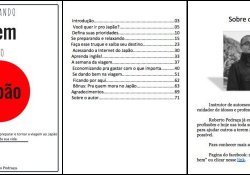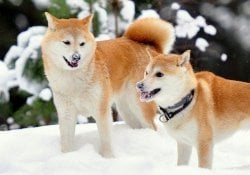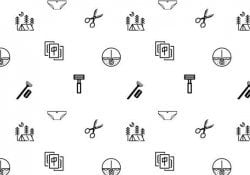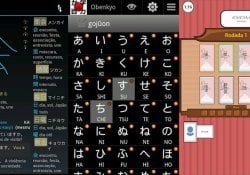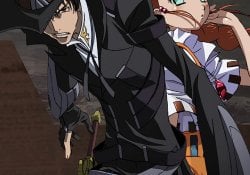Money in Japanese is called "Okane" [お金], while the official currency of Japan is called "EN" [円] which in Portuguese is called Yen and in English Yen. In this article we will see some curiosities about this and other coins from Japan.
Some think that Japan in all its history has only had the Yen as its currency, but there have been other currencies with other names. The big confusion is that EN [円] is a word that can refer to any currency, so the other currencies went unnoticed.
Índice de Conteúdo
Facts about money in Japan
The history of money in the country goes back hundreds of years being influenced by other Asian countries. The yen was introduced in the Meiji era in 1871 with fractionation. Before there were other currencies that we will see in the article.
In Japanese the yen is always called EN. There is no plural in the Japanese language for this word, nor is there a fractional currency like centavos in Brazil either. Money will always be called EN.
Wado - The first Japanese coins
The first coins in Japan were minted around 708 AD and were small silver disks in which a square hole was punched. They were modeled after Chinese coins of the time and were called "Wado Kaichin" or "Wado Kaiho".
The Japanese government considered the new coins so important that they were offered posts at the Imperial court to people who had large amounts of currency. From an early age, government hunting for money. hahaha
Minting is the process that coins go through to be engraved. It consists of promoting the stamping of a design on one, or both, sides of a coin, using a stamp.
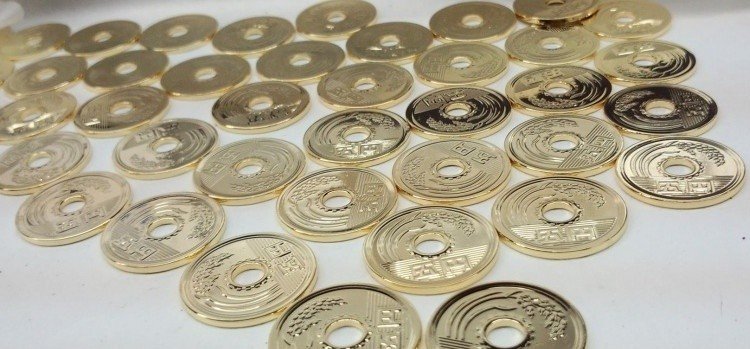
Kochosen - Japanese copper coins
Between 708 and 958 AD a variety of copper-based coins were minted, of different sizes, but still on the same disc with a square hole.
These coins were known as Kochosen, which translates to “domestic imperial copper.” Coin minting was discontinued during the 10th century to protect the government from collapse.
Copper shortages and mismanagement of coinage caused the value of Kochosen coins to decline to a point where ordinary people refused to use them in commerce.
The article is still halfway through, but we recommend also reading:
Koshu Kin - the Japanese weight coin
It took until the 15th century for coins to be used again in Japan. Koshu Kin coins did not have a denominational value, but were valued by weight, which was the only thing engraved on them.
Made of gold and silver, minted by individual warlords, they were a convenient way to buy land and weaponry.
How much is the yen worth?
As already mentioned, today's money is called yen [円], known in the west by the strange symbol [¥]. We currently have in circulation:
- Coin values in circulation: ¥1, ¥5, ¥10, ¥50, ¥100, ¥500;
- Values of banknotes in circulation: ¥1,000, ¥2,000, ¥5,000, ¥10,000;
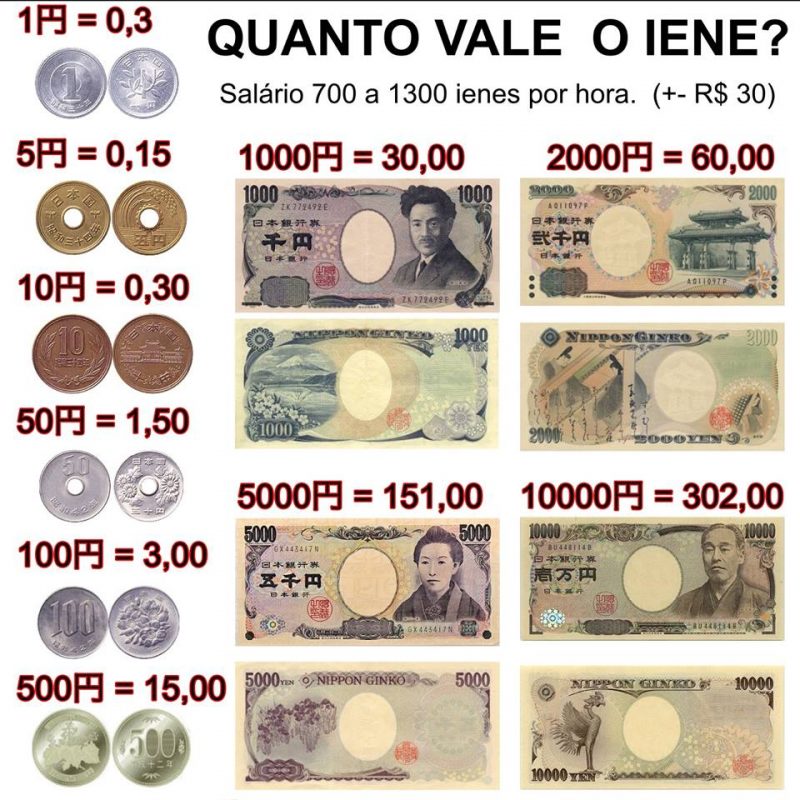
Do not be fooled by these large values, we must consider that there are no measurements of cents or decimals. Simply put, Japanese currency is not fractional!
Read also: Why doesn't the Yen have cents? Is it devalued?
If we were to transform each currency ignoring the exchange rate, and considering the price of products and the economy of Japan, we would have an equivalent note below: (Exchange of the Dollar on the date of this update about 5 reais).
| VALUE IN 円 | VALUE IN R$ | IT IS EQUIVALENT TO A COIN OF |
| 1 yen | 0.05 cents | 1 cents |
| 5 yen | 0.25 cents | 5 Cents |
| 10 yen | 0,50 cents | 10 cents |
| 50 yen | 2.30 Reais | 50 cents |
| 100 yen | 4.60 Brazilian Reais | 1 real |
| 500 yen | 25.00 reais | 5 reais |
| 1,000 yen | 50.00 Brazilian Reais | 2 USD |
| 2,000 yen | 100.00 reais | 20 Reais |
| 5,000 yen | 250.00 reais | 10 USD |
| 10,000 yen | 500.00 reais | 100 Reais |
This table is not exact, it just shows how Japan would work if they used [R$] instead of yen. What is the purpose of it? Helping them to get an idea of the money, showing that 60 USD for us is nothing more than 100 reais for them.
Even if someone earns 300,000 yen a month, which is equivalent to 7,800.00 Reais. When consuming it in Japan, considering the price of things and the economy, your money was no more than 3,000 reais spent.
In the eyes of foreigners, Japan is a place with an expensive cost of living. But for those who use the yen currency [円] and have a good salary, it ends up being a much better cost of living than in Brazil.
Sen and Rin - the yen has already been split
Has the yen ever had a penny? The yen was introduced to Japan in the year 1871 and had not one, but two fractions called RIN [厘] and SEN [銭]. Understand better how this fractionation works below:
- 10 rin = 1 sen
- 100 SEN = 1 SEN
That's how things worked in Japan until 1953. There were 1 and 5 RIN coins, followed by 1, 2, 5, 10, 20, and 50 SEN. At the time of fractionalization, the yen was 1, 2, 5, 10, 20, 50, 100, and 500.
In Japan, there were even coins that were not completely round, as in the case of some versions of 1 SEN and 1 YEN. See below some images of these fractionated coins and the old yen:
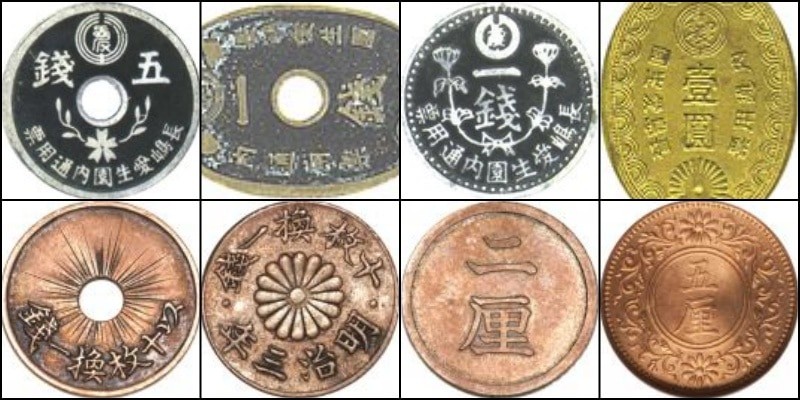
How much was the yen in the old days?
It is not so easy for us to discuss these old values, because things worked very differently in the current market. The data I found during this research always point to comparisons with gold, stock exchanges and not with the dollar that we are used to. Not to mention that the history of the currency in Brazil has had many twists and turns, leaving it kind of incomprehensible for current comparisons.
I will not try to delve into the subject of economics, inflation, cost of living, and numerous other factors that make the currency fluctuate in an incomprehensible way currently. If you want to understand better, we recommend researching about demand and supply, economic deflation, purchasing power parity, and international trade.
In 1914, one yen was equivalent to 0.50 in dollars. It is believed that 100 yen in 1914 is equivalent to 300,000 yen in 2017. Totally understandable, since 1 dollar from 1914 is equivalent to 23 dollars in 2015.
With 100 yen around 1920 you could buy 200kg of rice, 800 eggs, 4 years of subscription to the newspaper, go to the cinema 100 times or eat a thousand ramen. Remembering to be one of the items mentioned and not all.
If you had 100 yen before currency stopped being fractional, you would be considered rich. Also because at the time the biggest paper note was 100 yen.
The most recent table comparing the dollar with the yen dates from 1973 to 2016. This shows that in the last 40 years the value of the yen has gone from devaluation and is currently worth more than the dollar.
Of course, we need to find out about the economy, cost of living and salary at the time. Mainly because the yen hasn't been fractionated since 1953 (there are no cents), its lowest note is 1,000. So I personally consider 100 yen to be a 1.00 if the coin had cents.
The table below shows how many yen was worth a dollar from 1973 to 2016:
| Year | Iene | Year | Iene |
| 1973 | 301.15 | 1974 | 299.00 |
| 1975 | 297.85 | 1976 | 303.70 |
| 1977 | 288.25 | 1978 | 241.74 |
| 1979 | 201.40 | 1980 | 237.73 |
| 1981 | 202.19 | 1982 | 224.55 |
| 1983 | 232.90 | 1984 | 233.95 |
| 1985 | 254.11 | 1986 | 200.05 |
| 1987 | 154.48 | 1988 | 127.44 |
| 1989 | 127.24 | 1990 | 145.09 |
| 1991 | 133.65 | 1992 | 125.05 |
| 1993 | 125.02 | 1994 | 111.49 |
| 1995 | 99.79 | 1996 | 105.81 |
| 1997 | 118.18 | 1998 | 129.45 |
| 1999 | 113.14 | 2000 | 105.21 |
| 2001 | 117.10 | 2002 | 132.66 |
| 2003 | 118.67 | 2004 | 106.39 |
| 2005 | 103.27 | 2006 | 115.33 |
| 2007 | 120.59 | 2008 | 107.60 |
| 2009 | 90.35 | 2010 | 91.26 |
| 2011 | 82.63 | 2012 | 76.94 |
| 2013 | 89.15 | 2014 | 103.94 |
| 2015 | 118.25 | 2016 | 118.18 |
What about the currencies that existed before the yen? If we look at the old values, we are going to be completely confused to notice that something costs 60 or even 600x more today, but we must remember that the currencies of that time were fractional and we cannot directly convert a yen.
In the Edo period, 1 MON (文) was worth about 12 yen today, but it is worth remembering that gold and silver were also used at the time. In the Meiji era (1867-1912) a yen of that time is equivalent to 3,800 yen today.
Why are 5 and 50 yen coins holed?
In the past, several coins from various countries had a hole in the middle to prevent counterfeiting and lower production costs. However, with the advancement of technology, several countries have abandoned the practice of making pierced coins, except for Japan and a few other countries.
Nowadays the holes in the Japanese currency are currently of great help for the visually impaired. It is believed that these holes were originally made to save the metals that became scarce after the Second World War.
The 5 yen perforated coin was created in 1948, the 50 yen coin did not have any holes, but because it is very similar to the 100 yen coin, they soon made a hole in it to help with its identification.
Although we know the main reason why the 5 and 50 yen coins have a hole in the middle, there are still doubts about the origin of the holes in the coins. That's because more than 1300 years ago there were several Japanese coins with a square hole in the middle, even during the Edo period (1603 - 1868).
China may have influenced Japan's holed coins as it has influenced much of Japan's history and culture. There are theories that the circle on the coin represented the universe and the square in the middle of the coin represented the earth. Thanks to this hole, the coins were tied to the waist, which facilitated transport and protected them from thieves.
The hole in the coin had several uses such as serving as buttons on clothes or making necklaces. Some were even used in the manufacture of weapons. In the past, coins were manufactured in a way that removing and separating them during their casting was very laborious, the holes in the middle somehow facilitated this process.
You can read about the coin hole and the 5 yen coin bringing good luck in our article about Goen.
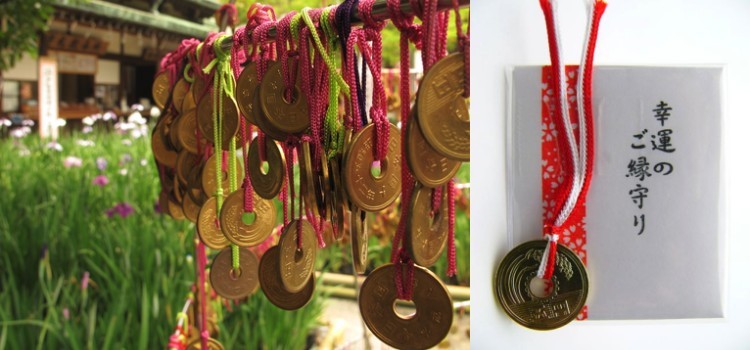
The faces of Japanese money
Have you ever wondered who those people are with your face on the 1,000, 2,000, 5,000 and 10,000 yen bills? Let's take a deep look at the origin of these notes and the people stamped on them.
Whose face is on the 1,000 yen bills?
On the 1000 yen note, we have the face of Hideyo Noguchi (1876-1928) printed since the year 2004. He was a great Japanese scientist, physicist, and bacteriologist who was responsible for discovering the antidote for snakebites and the causative agent of syphilis. He also proved that yellow fever was a viral disease and not bacterial as previously thought.
Hideyo Noguchi's history is quite troubled, he went through several difficulties in childhood, but he recovered becoming one of the most brilliant minds of the time. He is honored in several countries, including a statue of him in the city of Campinas. On the back of the note we find cherry blossoms, Lake Motosu and Mount Fuji.
Whose faces are on the 5,000 yen notes?
On the 5000 yen note, we have the face of the Japanese writer, novelist, and poet Ichiyo Higuchi (1872 – 1896), also known as Natsuko Higuchi. She was the first prominent female writer in modern Japan.
She was short-lived, but her stories had a great impact on Japanese literature and are still appreciated by the Japanese today. One of his famous works is Takurabe which even won a film adaptation. Behind the note we find a work that represents flowers of Isis, painted by Koorin Ogata.
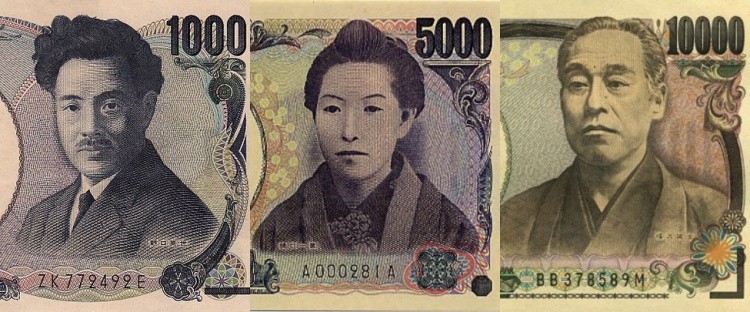
10,000 yen banknote face
The 10000 yen note bears the face of Yukichi Fukuzawa (1835-1901), a journalist and entrepreneur who fought for civil rights. He is known as the Japanese Voltaire and contributed to the spread of liberalist ideas and the modernization of Japan.
In Japan you can find people referring to the currency as "Yukichi-san". On the other side of the currency we have the image of the phoenix statue from the Byodoin Temple.
Faces on other yen banknotes
The 2000 yen note, which is very rare, has no face. On the front of the note, we find the drawing of Shureimon, a famous portal located in Naha - Okinawa. On the back, we find the representation of the Tale of Genji by Murasaki Shikibu.
Between 1984 and 2004, the 1000 yen note featured the face of Natsume Soseki (1867-1916), a Japanese novelist. He is known for works such as "Kokoro," "Botchan," "I Am a Cat," and "Light and Darkness." He is often considered the greatest writer of modern Japanese literature.
On the old 5000 yen note, there was the face of Nitobe Inazo (1862-1933), an agricultural economist, author, educator, diplomat, politician, and Christian. And on the 10000 yen note, the face of Fukuzawa Yukichi (1835-1901), a Japanese author, writer, professor, and translator.
Another personality that appeared on various old yen notes is Prince Shōtoku (574-622), who had great political and religious influence throughout Japan's history. He appeared on the 1000 yen notes from 1950 to 1953, and on the 5000 and 10000 yen notes from 1957 to 1969.
See other old notes and the name of personalities who were present in them:
- 1 yen – 1946-1948 – Ninomiya Sontoku
- 50 yen – 1950-1953 – Takahashi Korekiyo
- 100 yen – 1950-1953 – Itagaki Taisuke
- 500 yen -1950-1953 – Iwakura Tomomi
- 500 yen – 1957-1969 – Iwakura Tomomi
- 1000 yen – 1957-1969 – Ito Hirobumi
Questions about the Yen
In addition to the questions already mentioned, some ask several questions about the Japanese currency, let's take these questions and answer them below:
How to read the yen?
The yen in Japanese has no plural, no matter if one speaks one or 10 yen, it will always read EN [円] which means circle or coin, the Japanese word for Japan's money. Did you know that in Japanese there is no plural?
Why is there no penny in the Japanese yen?
The answer is quite simple, the people preferred it that way. The Japanese currency was already fractional in the past, but due to economic problems and inflation, the cents eventually became obsolete, and no other fractional currency was created.
To learn more about Japan's currency fractionation, we wrote an article about the yen being devalued and its currency being fractionated. Will it be true? For the simple fact that the currency has no cents, some end up having this idea of devaluation.
Why is the value of the yen so low?
Some question why the yen has such a low value, saying that money is devalued. As already mentioned, Japanese money is not fractional, hence this misleading impression. The value of the yen is equivalent to the dollar, but without cents.
It all happened when the Bretton Woods System collapsed in 1971, Japan's currency began to fluctuate. Result of the Japanese effort to become one of the greatest economic and industrial powers in the world.
Which currency is worth more the yen or the real?
The yen is much more valued than the real, being the third most widely circulated currency in the world. The yen is second only to the dollar and the euro. The currency is widely traded on the stock exchanges, it is always mentioned and traded among the big ones.
How many yen does a Japanese worker earn?
In Japan the minimum wage is around 150.00 unmodified, can easily reach 300,000 yen, over 10,000 reais when converted. In Japan, wages are paid by the hour, so your earnings can vary greatly by location, job, and workload. To learn more, read our article on Japanese Salary.
Read more: Minimum Wage In japan - Which job pays the most?
How much is R$ 1 in Japan? How much is R$ 100 worth in Japan?
1 real is equivalent to about 25 yen, while 100 reais is equivalent to about 250 yen, while 200 USD is equivalent to about 25,430 yen. Below we leave a table with details:
- R$ 1 is equivalent to 25 yen;
- R$ 2 is equivalent to 50 yen;
- R$ 5 equals 125 yen;
- R$ 10 equals 253 yen;
- R$ 25 equals 631 yen;
- R$ 50 equals 1,263 yen;
- R$ 100 equals 2526 yen;
- R$ 300 is equivalent to 7578 yen;
- R$ 500 equals 12,629 yen;
- R$ 1000 is equivalent to 25,000 yen;
- R$ 2000 is equivalent to 50,000 yen;
- R$ 10,000 is equivalent to 250,000 yen;
- R$ 50,000 is equivalent to 1,262,000 yen;
- R$ 100,000 is equivalent to 2,525,000 yen;
- R$ 1,000,000 equals 25,258,000 yen;
How much is 1 dollar in Japan? Convert US Dollar to Yen
I like to say that about 100 yen equals 1 dollar. In fact, since the yen has no cents, I usually use the dollar to calculate, just put a comma before the last two zeros to get the dollar value.
Of course, the yen has been undervalued lately and the dollar has been up. This comparison is no longer accurate as it was a few years ago, but it can be done to calculate the purchasing power of the currency.
As of the update date of this article (08/03/2022) the yen is quoted at 0.75 USD. Despite this, the table below will maintain the pattern I use to calculate the yen with the dollar.
- USD 1.00 is equivalent to about 100 yen;
- USD 2.00 is equivalent to about 200 yen;
- USD 5.00 is equivalent to about 500 yen;
- USD 10.00 is equivalent to about 1,000 yen;
- USD 25.00 is equivalent to about 2,500 yen;
- USD 50.00 is equivalent to about 5,000 yen;
- USD 100.00 is equivalent to about 10,000 yen;
- USD 1,000.00 is equivalent to approximately 100,000 yen;
Why is the real worth more than the yen?
People have the misconception that the real is worth more than the yen, but what happens is that the Japanese currency has no cents and is not fractional. Its smallest paper bill is 1,000 yen.
This does not mean that the Japanese currency is more devalued than the Brazilian currency, the purchasing power of the Japanese and the yen is much greater than that of Brazilians with real.
Videos about Japanese Money
To finish the article, let's leave some videos about Japanese money and its curiosities:



